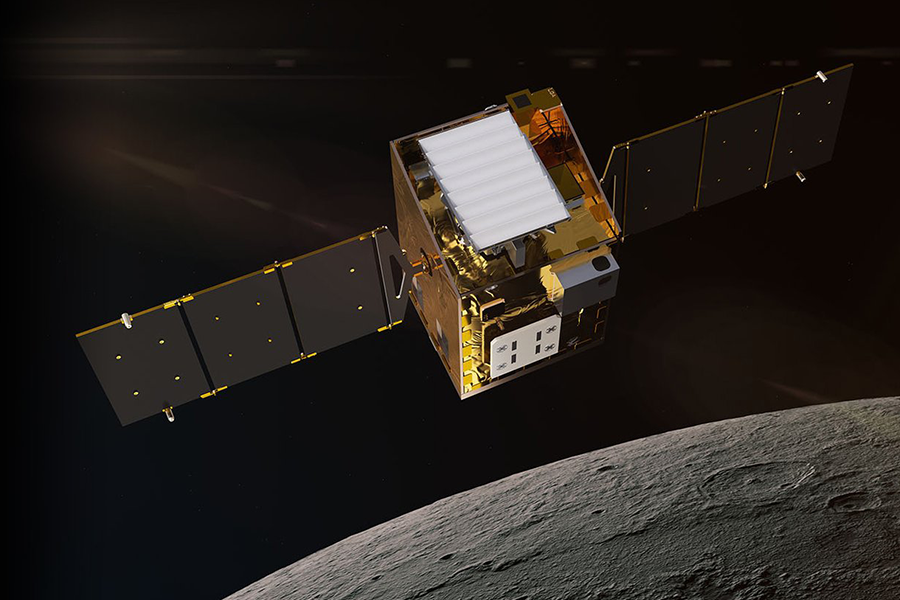
HOUSTON—NASA’s Lunar Flashlight small satellite mission to seek out subsurface water ice at the Moon’s south pole has experienced a propulsion issue that has inhibited the performance of three of the spacecraft’s four thrusters, which are fueled by a groundbreaking new green monopropellant.
The issue first surfaced three days after Lunar Flashlight’s launch on Dec. 11 as a rideshare aboard a Falcon 9 rocket whose primary payload was Japan’s Ispace commercial Hakuto-R lunar lander.
Lunar Flashlight was designed to enter the same elliptical Near Rectilinear Halo Orbit (NRHO) around the Moon achieved by the NASA-funded Cislunar Autonomous Positioning System Technology Operations and Navigation Experiment (Capstone) mission on Nov. 13 to characterize the NRHO trajectory. The previously unexplored, propellant-efficient NRHO is the planned future home for NASA’s Gateway lunar station, part of the agency’s Artemis strategy to establish a permanent human presence at the Moon with commercial and international partners.
In a Lunar Flashlight mission update issued late Jan. 12, NASA’s Jet Propulsion Laboratory noted the propulsion system has operated for only a few seconds at a time and ground-based analysis and testing points to obstructions in the fuel lines limiting the flow of the propellant. Lunar Flashlight is the first deep-space mission to employ Advanced Spacecraft Energetic Non-Toxic (ASCENT), a green propellant developed by the U.S. Air Force Research Laboratory and tested previously by NASA in low Earth orbit.
As part of its response, the mission team plans to operate the Lunar Flashlight propulsion system at reduced thrust for longer periods in an effort to clear any obstructions. The team also is working to develop a limited thrust strategy for achieving NRHO. Daily trajectory correction maneuvers are to begin in early February in a bid to enter NRHO in four months.
The necklace-shaped orbital trajectory extends 43,000 mi. (73,000 km) over the Moon’s north pole, while sweeping as close as 9 mi. (15 km) over the lunar south pole.
Lunar Flashlight is equipped with a laser reflectometer that includes four near-infrared lasers. Their radiance is to be focused into the recesses of permanently shadowed lunar south pole craters to seek out the reflective signature of subsurface ice deposits. Lunar water ice is considered a human life support resource as well as a source of liquid hydrogen and oxygen rocket propellants.
